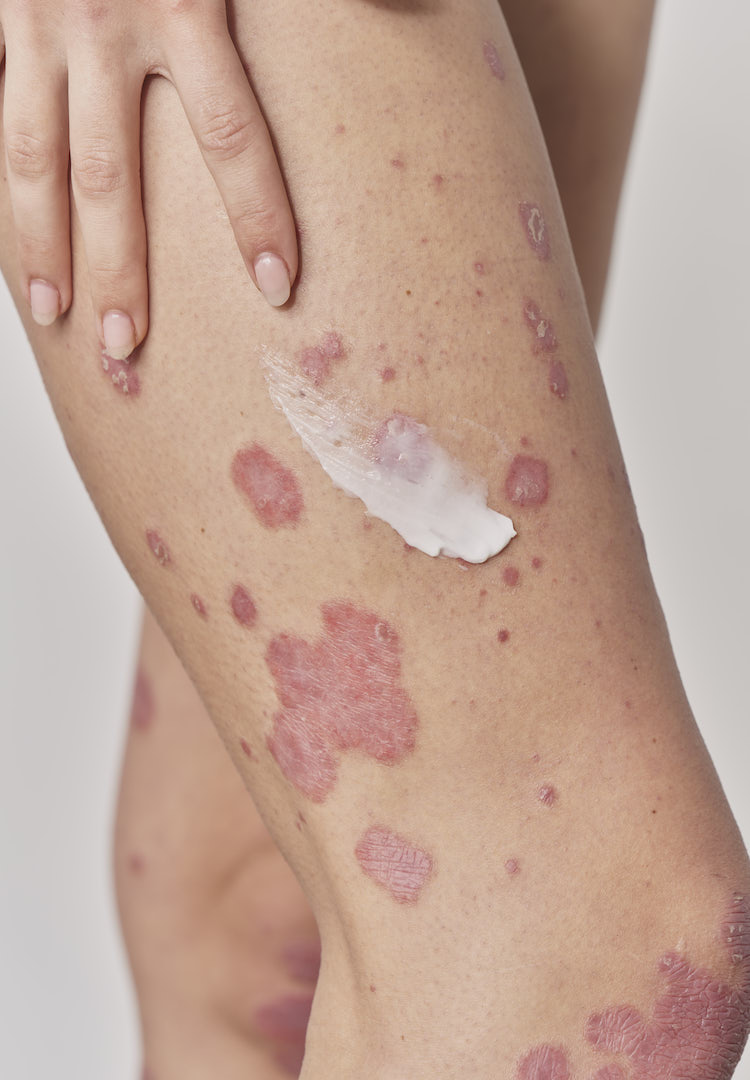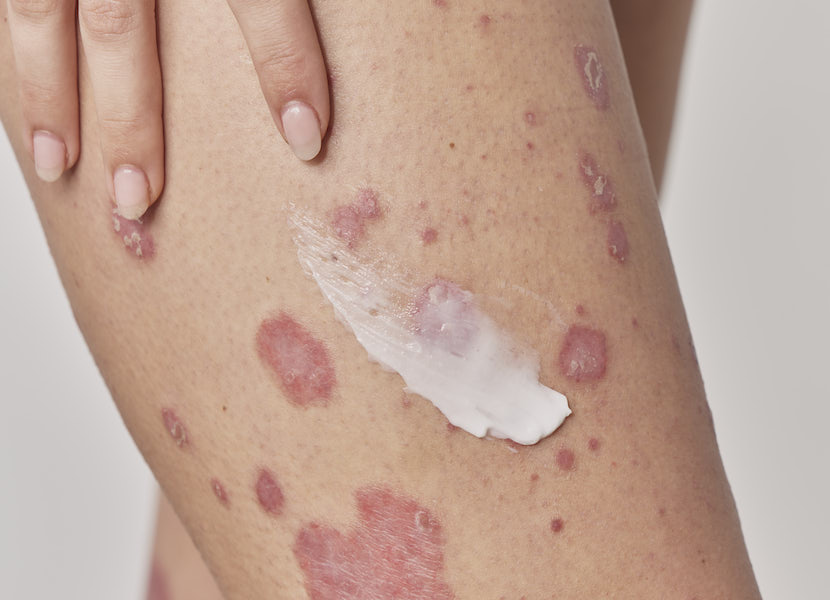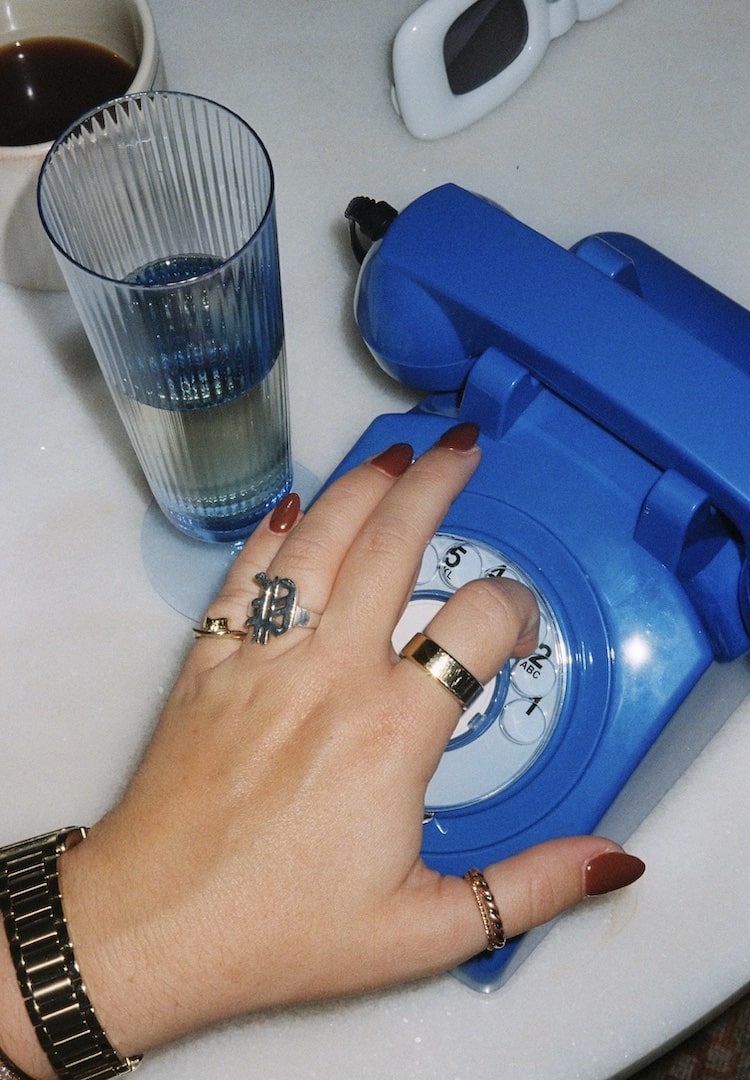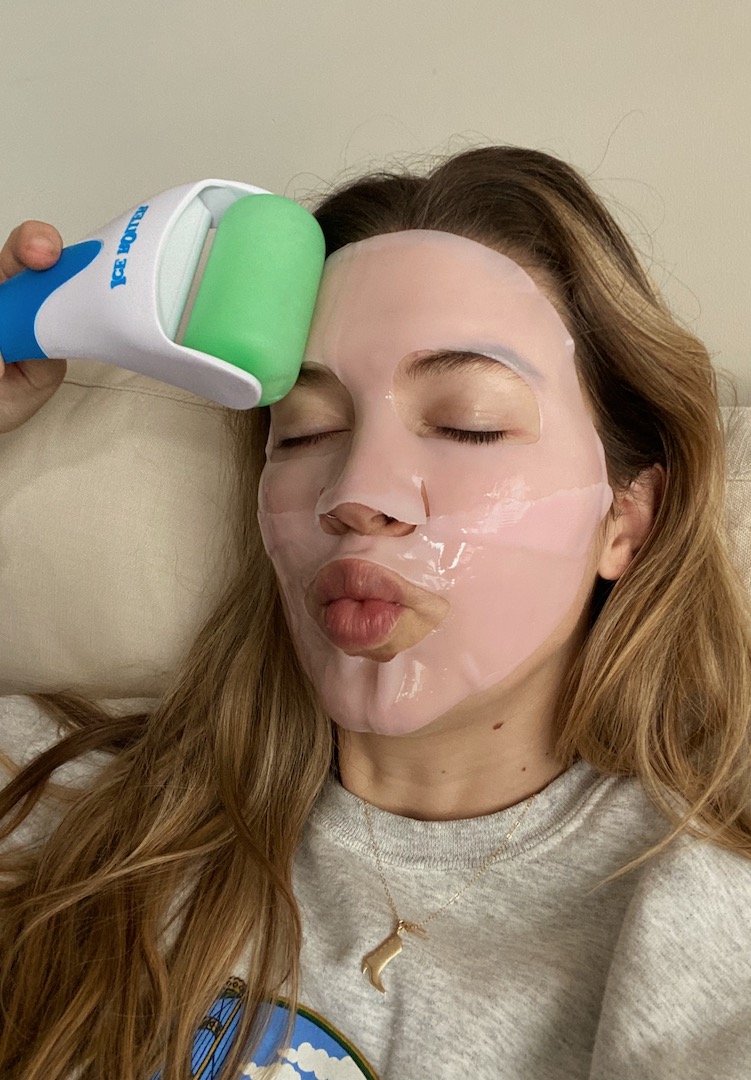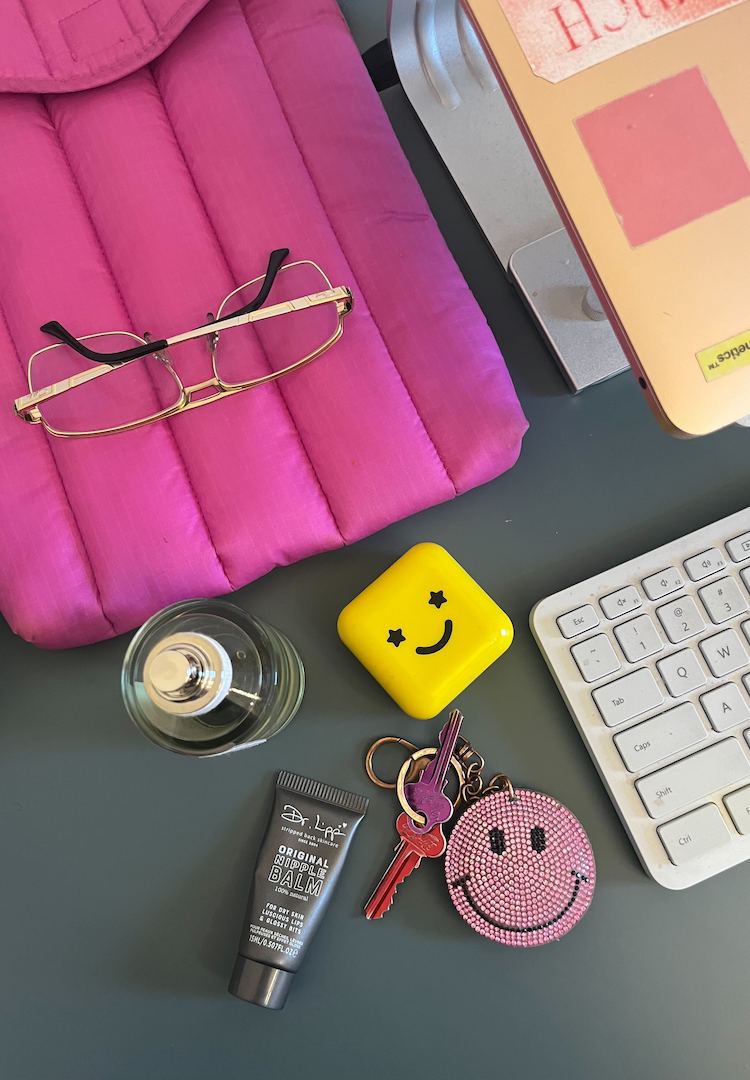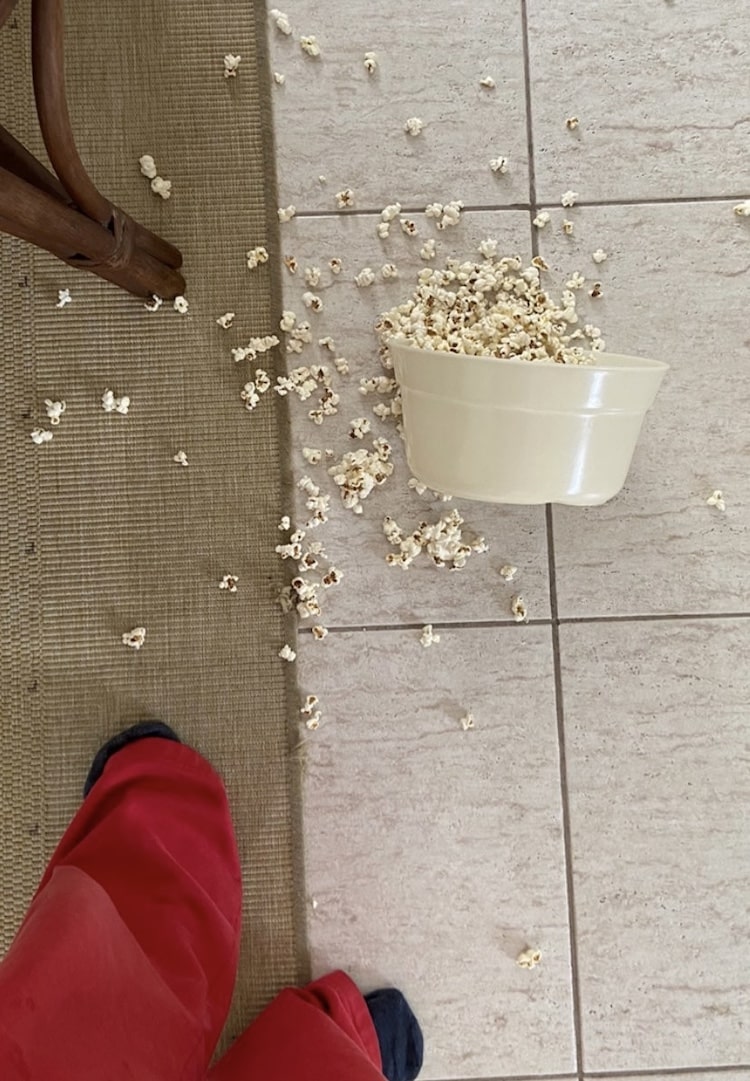“My skin was this open wound”: The horrifying reality of topical steroid withdrawal
IMAGE VIA YOURS ONLY
WORDS BY MAGGIE ZHOU
“I couldn’t leave my house.”
Content warning: This article discusses suicide, depression and anxiety.
When Keilah was a baby, she had eczema. The doctor prescribed her topical steroids when she was three months old. There’s nothing extraordinary about this interaction, in fact, it’s overwhelmingly common. As someone with eczema, I’ve used topical steroids. It’s estimated between 10 to 15 per cent of Australians have eczema, and some research suggests this figure is closer to 40 per cent.
For almost a quarter of a decade, 26-year-old Brisbane woman Keilah used topical steroids without realising she had an addiction. She used to dilute her steroid cream with moisturiser and would then apply it head to toe to help her manage her flare-ups of eczema, psoriasis and dermatitis – until it stopped helping her. Last November was the last time she used topical steroids, and since then, she tells me her life hasn’t been the same.
“I could cry just thinking about it,” she says when I ask her about her initial withdrawal. “It completely changed my life, nothing has ever been the same. From my physical [and] mental health, my work, my relationships, my social life – I cannot leave the house… I look terrible, I just don’t look like myself at all.”
Also known as corticosteroids, topical steroids are an anti-inflammatory product used to treat a variety of skin conditions. Coming in varying potencies, topical steroids can be bought over the counter at pharmacies or can be prescribed by medical professionals.
A subset of people who regularly and consistently use topical steroids might experience what’s known as topical steroid withdrawal (TSW). It’s not an officially recognised medical condition, it can’t be listed on medical records and there’s little research about it, but online, there’s a growing community of people voicing their pains and experiences navigating what’s believed to be TSW.
“There is an analogy with antibiotic resistance which has been caused by the inappropriate use of a powerful treatment ([like] antibiotics). In the same way, topical steroids must be used with care and medical or specialist nursing supervision,” Dr David Krieser, Associate Professor and Sunshine Hospital’s Director of Paediatric Emergency Medicine, tells me.
TSW is an umbrella term categorising adverse reactions to coming off topical steroids. Symptoms include (but are not limited to) red or darker burning skin, flaking or peeling skin, hair loss, oozing pus-filled bumps, pain, fatigue and poor mental health. These can last months to years.
Close to a year into her TSW journey, Keilah has checked off all these symptoms. “It was so unmanageable, I had no idea how to deal with it because it was nothing like my eczema. [I developed] bright red, intense, burning skin. I completely lost my ability to sweat, all my hair fell from my eyebrows, my head, my arms [and] legs,” she shares.
@keilsg The first month of TSW i had no idea what it was. I was so frustrated and upset because nothing i did helped my skin. Water and moisturiser felt like acid on my skin. Friction against clothes and even feeling wind on my skin caused me pain. My skin started to lose its elasticity and was so weak it would break just by moving my limbs. #tsw #topicalsteroidwithdrawal #tswrecovery #eczema #healing ♬ A Day in My Life – Soft boy
“I had intense nerve pain. I couldn’t regulate my body temperature; [in] the heart of summer and I was shivering. My skin was this open wound, it just had no skin barrier. It was so thin and fragile that if I turned my head or extended my limbs, my skin would just rip [and then] would ooze and weep and bleed.”
Keilah says she had no tolerance for water or moisturiser, mentioning that even the smallest amount of water on her skin felt like burning acid. “At one point the inflammation in my body was so severe that I couldn’t walk, I couldn’t extend my arms, I developed a tremor so I couldn’t hold things and I would just lay in bed day and night.”
As someone who was extremely grateful that she’d never encountered any mental health concerns before her TSW, Keilah’s mental state took a sudden and dramatic turn. She went from performing gigs and pursuing her passion for music to being confined to her bedroom. “There was probably a month span where I was just laying in bed. I stopped eating, I stopped brushing my teeth, I pretty much completely stopped looking after myself,” she says.
“I was so suicidal. I called Lifeline one day and they were amazing, they talked me down and were just really encouraging. I made the decision that day to move back home with my parents because I just couldn’t look after myself… Depression and anxiety have [become] something I’ve got to battle every single day.”
Topical steroid withdrawal videos have over 45 million views on TikTok. Keilah is far from being alone in her struggle. 29-year-old Melbourne-based woman Christine used topical steroids for 20 years. When she was five years old, she was given topical steroids to manage her eczema, which was found behind her knees and in her elbow creases.
View this post on Instagram
“As bad as this sounds, I actually used the steroid cream as my daily facial moisturiser as I wasn’t aware of the damage it could cause and neither did my parents. There was little education accessible back then,” she tells me.
When she was 25 years old, Christine decided to overhaul her health and wellbeing. She cut out inflammatory food from her diet (everything from gluten and dairy to soy and wheat) as well as caffeine and alcohol. Her household products switched to organic alternatives, she changed up her entire skincare regime and started seeing a naturopath.
With this all in action, she cut off her usage of topical steroids too. “My body went into purging overdrive where I was covered in oozing rashes, and [had] split, bleeding [and] peeling skin. It hurt to shower without any product. I’d scratch until I bled and suffered from insomnia. This process of peeling, oozing skin occurred for over two years,” she says.
For those two years, Christine spent a lot of her time “hidden away in [the] bedroom” as clothes stuck to her rashes and caused her further pain. Ahead of its time, her workplace allowed her to work from home for most of the week. “My stress and anxiety were at an all-time high, especially when I’d see people’s reactions to my skin… I’d spend most days sleeping because that was how I wouldn’t scratch my skin off or take my mind off it,” she adds.
So why would a product that’s so common and so widely prescribed be able to potentially cause its users this much harm? “So many people in our [sensitive skin] community have said their dermatologists don’t believe TSW is real,” Ashli Templer, Founder of Australian sensitive skincare brand Yours Only, tells me. “Topical steroids are a quick fix for flare-ups, with typically no short-term effects. Everyone’s always looking for instant relief and because they can’t see any issues after a few uses, they think it’s okay to keep using it.”
@ctrl.skin 1 year in the life of TSW. It may not look like progress, but I hope the hardest is behind me… bring on 2023 🤍 #topicalsteroidwithdrawal #tsw #ctrlskin #fyp ♬ To Build A Home – The Cinematic Orchestra
Eczema more commonly presents itself in young children, adding an additional layer of medical concern and stress for parents. “There is a really significant disease burden with eczema or dermatitis which are usually steroid-responsive. Imagine a parent bringing a three-to-four-year-old who has arms, legs and face covered with eczema,” says Dr David.
“They have tried moisturiser and multiple non-soap cleansers and there is no change. I can prescribe a strong steroid for their body (arms and legs) and a weaker steroid for the face. In about 10 days, most of the rash will settle,” he says, adding that he suggests usage stop after 10 to 14 days, with a reduction to twice a week if needed before visiting their GP three weeks on.
Keilah’s experience with medical professionals only heightened the isolation she felt. “There’s just a complete disregard for this condition. I’ve had multiple appointments with dermatologists and I’ve seen an immunologist, and they’re just so blase about it,” she says. “They just downplay it so much and pretty much just gaslight you and make you feel like you don’t know what you’re talking about.”
While research on TSW is still in its infant years, Christine’s biggest advice to others who believe they’re suffering from this condition is to remember “that this whole process is a part of healing”. “Healing is possible, use the resources that are available now, push back when you don’t feel comfortable with medical professionals, seek alternative support and know you’re not alone.”
For more on topical steroid withdrawal, head here.


